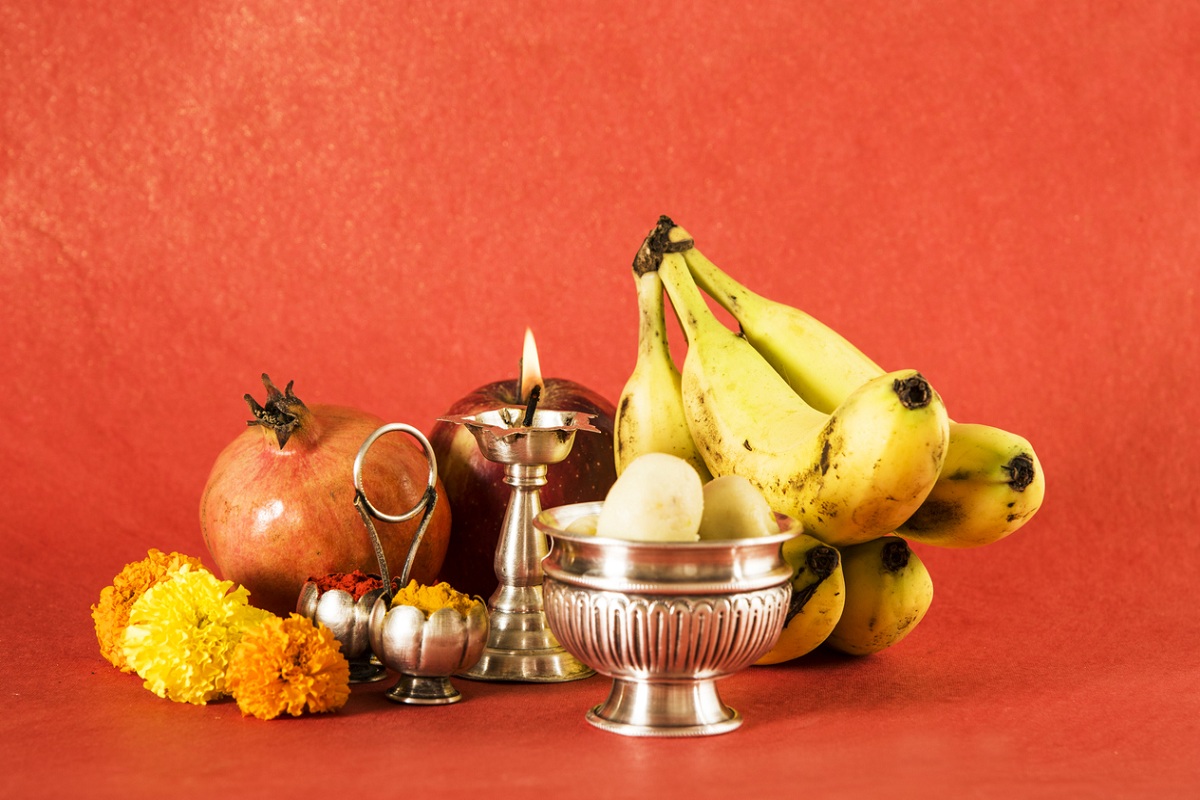Festivals embodying the essence of Goan traditions
As the colours of Shigmo paint the streets with exuberance, various other festivals prepare to showcase their diverse cultural heritage through a series of unique festivals.
Worshiping nine goddesses for nine days, stage decorations, recitation of the legend, enactment of the story, and chanting of Hindu scriptures are all part of the festivities.

Photo: iStock
Chaitra Navratri, the nine-day festival is celebrated with a lot of pomp and grandeur all over India. The festival commenced today and will continue for 9 days till 11 April. During these nine days, people keep a fast and each day is dedicated to nine different forms of Goddess Durga.
There are four Navaratri seasons, according to theory. The Sharada Navaratri, which occurs near the autumn equinox (September–October), is the most widely observed, while the Vasanta Navaratri, which occurs near the spring equinox (March–April), is the second most prominent in Indian subcontinent culture. Navaratri occurs in the bright half of the Hindu lunisolar months in all situations.
Worshipping nine goddesses for nine days, stage decorations, recitation of the legend, enactment of the story, and chanting of Hindu scriptures are all part of the festivities. The nine days also serve as a major crop season cultural event, with competitions for pandal design and staging, family visits to these pandals, and public celebrations of Hindu classical and folk dances. Fasting is a common way for Hindu worshippers to commemorate Navratri.
Advertisement
The second most popular Navaratri is Chaitra Navratri, which is named after the word Vasanta, which signifies spring. During the lunar month of Chaitra (March–April), it is observed. The event occurs after the spring harvest in certain areas, and during the harvest in others. According to the Vikram Samvat calendar, it is also the first day of the Hindu lunisolar calendar, popularly known as the Hindu Lunar New Year.
During the lunar month of Magha (January–February), Magha Navaratri is celebrated. Gupt (secret) Navratri is another name for this Navratri. The fifth day of the celebration is known as Vasant Panchami or Basant Panchami, the Hindu tradition’s official start of spring, when goddess Saraswati is honoured through the arts, singing, literature, and kite flying. Kama, the Hindu god of love, is worshipped in various areas. Individuals or groups of people observe Magha Navaratri.
During the lunar month of Ashadha (June–July), at the start of the monsoon season, Ashada Navaratri, also known as Gupta Navaratri, is observed. Individuals or groups of people observe Ashada Navaratri.
Navratri is celebrated in Northern India, Western India, Eastern India and Southern India.
Northern India:
In North India, Navratri commemorates Lord Rama’s victory over the evil king Ravana. The Ramlila, which is enacted ceremoniously during Dussehra, is the culmination of the festival. On the
‘Vijaya Dashami’ day, effigies of Ravana, Kumbhakarna, are burned to commemorate the victory of good (Rama) over evil forces.
Mother Divine, her entire creation – all forms of life, all forms of art, music, and wisdom – is honoured through special pujas, yagnas, homas, fasting, meditations, silence, singing, and dancing throughout the course of nine days. She is revered as the saviour of mankind from all types of evil and ignorance.
Western India:
Navratri is celebrated in Western India, mainly in Gujarat, with the famous Garba and Dandiya-Raas dances. Garba is a graceful style of dance in which ladies gracefully move in circles around a lamp-filled pot. The word ‘Garba’ or ‘Garbha’ means womb, and the lamp in the pot represents life within a womb in this context. The Dandiya dance, in which men and women dance in pairs with small, decorated bamboo sticks called dandiyas in their hands, is an alternative to the Garba. Tiny bells called ghungroos are affixed to the ends of these dandiyas, which generate a jingling sound when the sticks hit each other.
Eastern India:
In West Bengal and North East India, the last five days of Sharad Navratri are known as Durga Puja. Maa Durga is seen riding a lion and wielding numerous weapons. The lion represents dharma, or willpower, while the weapons represent the attention and severity required to eliminate negativity from our thinking. Durgashtami is the eighth day of the Hindu calendar. In temples and other locations, life-size clay idols of the Goddess Durga representing her destroying the monster Mahishasura have been erected. These idols are then worshipped for five days before being immersed in the river.
Southern India:
In south India, Navratri is a time to bring friends, relatives, and neighbours over to see the Kolu, which is essentially a doll and figurine exhibition. Bombe Habba is the Kannada name for this show, which is also known as Bommai Kolu in Tamil, Bomma Gullu in Malayalam, and Bommala Koluvu in Telugu.
In Karnataka, Navratri is known as Dasara. During the nine nights of Navratri, yakshagana, a night-long dance in the form of epic dramas from the puranas, is performed. The Mysore Dasara is marked by pomp and pageantry, portraying the triumph of good over evil. It is celebrated as the state festival of Mysore, which is led by the royal family and their gigantic savari.
Advertisement